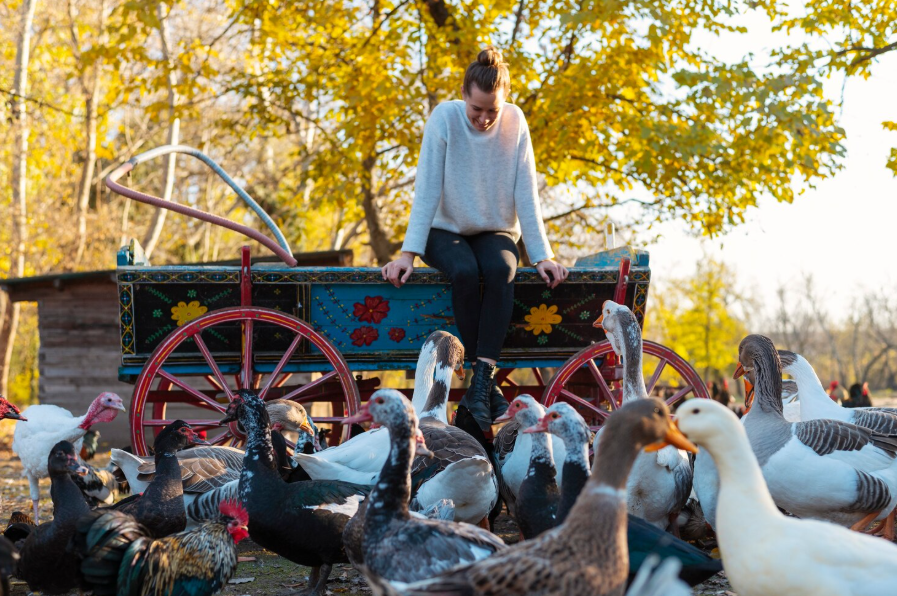Blog
Indian Runner Duck Guide: Nature, Care, Eggs, and Breeding

Indian Runner Duck are a distinctive domestic duck breed famed for their upright posture—standing and moving like little penguins rather than waddling. Originating from islands like Lombok, Java, and Bali in what’s now Indonesia, they became well-known in Europe in the mid-19th century and have since spread worldwide as prolific egg-bearers.
Physical Appearance and Structure
Indian Runners possess long, wedge-shaped heads, high-set eyes, slender necks, and elongated bodies. Weighing between 1.4–2.3 kg, they range from about 50 cm tall in females to 76 cm in males. Structural features like a pelvic girdle located towards the tail allow them to stand upright and trot—unlike other duck breeds.
Color Varieties and Genetic Diversity
This breed is available in many standardized color variations including white, fawn-and-white (penciled), fawn, black, mallard, trout, blue trout, cinnamon, chocolate, Cumberland blue, and more. These mutations emerged through selective breeding for plumage patterns and color dilution genes.
Historical Development and Impact
Although called “Indian,” the breed actually hails from Southeast Asia. They were imported into Britain in the 1830s and later played a foundational role in developing modern light duck breeds—such as the Khaki Campbell and Buff Orpington—thanks to their high egg-laying capability and elegant form.
Egg Production and Laying Capacity
Indian Runners are renowned for egg production, laying between 173 to over 250 eggs annually depending on conditions. Some early reports even cite as many as 300 eggs per year, though modern average studies show around 173 eggs per duck annually—placing them among the top-performing egg layers in ducks.
Temperament and Behavior
Friendly and sociable, Indian Runners are active foragers that enjoy roaming and exploring. They are quieter than many duck breeds—males emit soft, raspy sounds, while females quack more—and though usually skittish with strangers, consistent handling can make them affectionate companions.
Ideal Housing and Space Needs
Indian Runners need space—ideally 4–6 sq ft per duck in the coop and at least 10–25 sq ft per duck for daytime roaming. They enjoy free-ranging, grazing, and occasional access to shallow water or a kiddie pool. Raised coops aren’t necessary since they sleep and lay eggs on the ground rather than perching.
Feeding and Nutritional Requirements
Their diet should include balanced layer pellets (15–19 % protein) plus greens, bugs, grains, and oyster shells for calcium. Ducklings require higher niacin levels than chicks—feeds should be supplemented with peas or greens to prevent leg deformities. Access to clean, fresh water at all times is essential.
Health, Disease Prevention & Lifespan
These ducks are hardy and tolerate both heat and cold well. The primary health risks include intestinal parasites and occasional respiratory issues. Regular deworming and clean housing help maintain their health. With proper care, they can live 8–12 years.
Broodiness and Breeding Behavior
Indian Runners rarely go broody and are poor nest sitters. Successful breeding often requires egg collection and artificial incubation. Hatchlings thrive with dedicated care in a brooder, gradual temperature reduction, and introduction to foraging and coop life.
Uses and Benefits on Small Farms
This breed excels at pest control, feasting on slugs, snails, insects, and weed seeds in gardens or vineyards. They offer high egg yields, contribute fertilizer, and support organic farming practices—all in a friendly and manageable package.
Handling and Socialization Tips
Indian Runner ducks respond best to early and consistent handling. Treats like peas or lettuce when approaching helps them associate humans with food and reduce skittishness. Regular gentle interaction fosters trust and makes them more affectionate over time.
Noise Management and Social Harmony
Though generally quiet, they can be vocal—especially hens in mornings. To minimize disturbance, use a dark night pen, offer treats for distraction, maintain a healthy drake-to-duck ratio, and consider soundproofing if needed in residential areas.
Mixing with Other Poultry
They coexist well with similar-sized chickens or ducks but may not thrive with aggressive or very chatty breeds. Separate males if not breeding to avoid dominance issues. Foraging with other poultry is possible downstream only if temperament and space match.
Disease Control Practices
Vaccination protocols—such as for duck cholera and duck plague—are recommended. Monitor for symptoms like lethargy, diarrhea, or weight loss. Natural supplements like oregano, thyme, garlic, or diatomaceous earth may help prevent parasites, though veterinarians provide more reliable treatments.
Productivity Comparison with Other Breeds
While breeds like Khaki Campbell average more (~190 eggs/year), Indian Runners remain competitive given their foraging abilities. Their lightweight bodies and upright stance make them more suited for egg production rather than meat yield compared to heavier breeds.
Impact on Other Duck Breeds
Indian Runners played a key role in the birth of Khaki Campbell and Buff Orpington ducks. Their genes also contributed to the development of breeds like Orpington, Abacot Ranger, Welsh Harlequin, and modern exhibition ducks rich in color varieties.
Display and Exhibition Standards

In show settings, standards typically require upright stance, sleek conformation, and pure color lines. Exhibition varieties include White, Penciled, Fawn, Trout, Mallard, Blue Trout, Chocolate, Cumberland Blue, and more. Breeders work to maintain breed purity and predictability in offspring.
Challenges of Color Breeding
Color genetics in Runners is complex. Some traits like blue dilution or pied pattern breed unpredictably. Exhibition breeders carefully select mating pairs to retain stable color lines, making this breed a showcase of avian color genetics.
Suitability for Different Keepers
Indian Runners suit backyard farmers, homesteaders, or egg-focused hobbyists who enjoy active, space-needing birds. They may not fit those seeking quiet, low-maintenance pets or those with limited outdoor space. Start early to socialize them for a friendlier flock.
Final Thoughts
Indian Runner Ducks are extraordinary—a blend of charming personality, prolific egg-laying, architectural elegance, and genetic legacy. They thrive when given space to roam, quality feed, and gentle socialization. Whether for eggs, pest control, or sheer delight, they make a unique and valuable addition to small-scale poultry keeping.
-

 Tech1 year ago
Tech1 year agoHow to Use a Temporary Number for WhatsApp
-

 Business2 years ago
Business2 years agoSepatuindonesia.com | Best Online Store in Indonesia
-

 Social Media1 year ago
Social Media1 year agoThe Best Methods to Download TikTok Videos Using SnapTik
-

 Technology1 year ago
Technology1 year agoTop High Paying Affiliate Programs
-

 Tech10 months ago
Tech10 months agoUnderstanding thejavasea.me Leaks Aio-TLP: A Comprehensive Guide
-

 FOOD1 year ago
FOOD1 year agoHow to Identify Pure Desi Ghee? Ultimate Guidelines for Purchasing Authentic Ghee Online
-

 Instagram3 years ago
Instagram3 years agoFree Instagram Auto Follower Without Login
-

 Instagram3 years ago
Instagram3 years agoFree Instagram Follower Without Login



















